-
Posts
1,349 -
Joined
-
Last visited
Content Type
Profiles
Forums
Gallery
Events
Image Comments posted by hollowneck
-
-
That presentation base is such a nice complimentary color and also unusual. I like it. A lot.
I also like the depiction of cargo loading.
-
Love seeing all the angles on this unusual and superb model. I'd love to take professional studio photos of this model.
-
Thank you, schooner.
Ron
-
On 1/12/2023 at 4:34 AM, shipman said:
The Vanguard figures are excellent.
Being laser printed, it would be useful if those figures were available in a range of scales, say 1:48, 1:84 and 1:96.
Indeed, the Vanguard figures are superbly sculpted and printed. Check the Vanguard site: I believe some (but not all) of the figures are on offer for a range of scales.
Ron
-
Marcus,
There are a many different techniques and materials to choose from to create water(line) dioramas. I have discovered that the larger the scale (above 1:72) requires a much different approach to create credibility. I model nearly always in 1:64 and thus I’ve had to experiment with a combination of different materials suitable to this scale. My dioramas are an involved and lengthy process; no simple pour a resin OR crinkled aluminum foil w/paint which works reasonably well for smaller scales, especially steel navy 1:350 down to 1:1200.
I am scheduled to present a Webinar (The NRG calls them “Workshops”), sometime this coming April (2023), but the exact date and time has yet to be confirmed. When it is, I’ll post the date, time and ZOOM link here in one (or more) of the appropriate MSW Topics. I am configuring my presentation to be no more than 45 minutes(w/q&a). My “Creating Realistic Water’-tentative name - will likely be two (2) sessions. Typically, it takes about 10 days to fully create my dioramas- sometimes a few days more (like this one).
Please keep checking back here over the next couple months…
& Many Thanks for your kind words.
Ron
-
Thank you, gentlemen. Much appreciated.
Ron
-
En’shallah.
-
Thanks, Marcus.
Yes, these ships were very fast: a very long waterline, shallow draft, huge sail area and a limited crew. The cannon were typically 4-6 lb and short-barelled. These vessels would also land marauding scoundrels to pillage unfriendly neighbors and round-up slaves along the Barbary Coast city states. The U.S. Navy encountered these evasive and deadly ships in 1820 when we lost a major early-Navy warship that was "protecting" our interests in the Mediterranean (1820-ish).
-
Thank You, Marcus.
Tight quarters indeed; there was absolutely no room to store the oars onboard - two dozen! I have no idea how sailors manipulated the oars when there was no wind. Did they sit on top of the cannon? (note the oar openings immediately adjacent and positioned nearly below the cannon ports). I added the water/provision barrels and the square cargo boxes on the quarterdeck. The sail area of these vessels was immense; these fighting ships were very "beamy" and shallow draft. There was very little space below deck- but then again the weather is typically hot and steamy for many months of the year in the part of the world where these ships were commonplace. The crew could hang out on deck most of the time.
The kit's gratings are hugely out of scale; a sailor/slave could practically fall through one of the openings! I liked doing the unique rigging including the lateen sails. I did these with the fabric included in the kit, but dyed them red from research I did of the period (1740-60). This build was before I knew how to make silkspan (paper) sails.
The instructions were less than good, but the plan drawings were adequate to get the job done without having to google/translate from Amati's Italian...
-
Marcus,
I've augmented my love of model ship making to include making these dioramas for presenting the models. I was encouraged to set this model into a "surf n' turf" when I discovered the superbly cast, scale figures from the U.K. There were many different ones available and period accurate; otherwise I couldn't have pulled this off convincingly. It also helped that the kit manufacturer in Japan (WoodyJoe), also makes kits for buildings_hence, the depiction of an active village. The Samurai, in addition to being their clan's warriors also helped their fiefdom's constituents deal with everyday challenges, like eating and fertilizing crops.
I encourage you to take a shot at putting one of your models into a diorama setting. It's a lot more work (and planning), but its also a lot more fun too!
-
Thanks Benjamin. As can be seen, the proportion of land to water is about equal. I've learned how to do most of the landscaping by studying and hanging out with model train hobby guys in one of my model clubs.
-
Thanks Marcus. I wanted some motion, but not too much as a rocky shoreline would dash the ship on the rocks (note the double anchors holding her away from the rocky off-loading area). These Edo period cargo ships (1720-40 here) were very shallow draft and could navigate small rivers as well as get close to shore and quays. Most of the cargos were stacked high on the top decks which also meant they had to be broad-beamed to help avoid weather catastrophes.
-
Thank You, Marcus!
The new, accurately-scaled 28mm 3D-printed 18th-C British navy figures from Vanguard Models help considerably to create the realism. I have a total of ten sailors aboard and in visible positions.
The ship's 24' clinker-hulled launch is also a 3D-printed item from the same manufacturer of the figures.
-
Thank You, Guys!
This is one of my favorite builds, right at the top. The kit is beautifully designed and I believe still available from Amati. It's a nice size: not too big, nor too small.
I've displayed it with a larger scale model of a typical carronade of the era as well as a portrait photo of the ship's young Captain who won celebrated victories over the Ottoman Empire in the early 19th century. There is a monument in Mikolaiv, Ukraine for Cpt. Kazarsky.
-
Niiiiicccce!
-
-
-
Nice touch on the lighting. Nice rigging too.
Are the batteries under a "doghouse?"
-
Very nice! Great job on every level.
-
Nice flag. Baggy “wrinkles” is actually ‘WINKLES.”
Spell-correct will make this wrong every time!
What a nicely done model with all the details that make it something special: congratulations.
Ron
-
Love the radome! Nice work, glad to see a full set of furled sails too; well-done.
Ron
-
Nice work, nice photos. Congratulations on a very tasty miniature.
-
A gem! I love the color choices.
-
Love the little furry fellows.
Nice detail throughout, fun to look at.
Ron

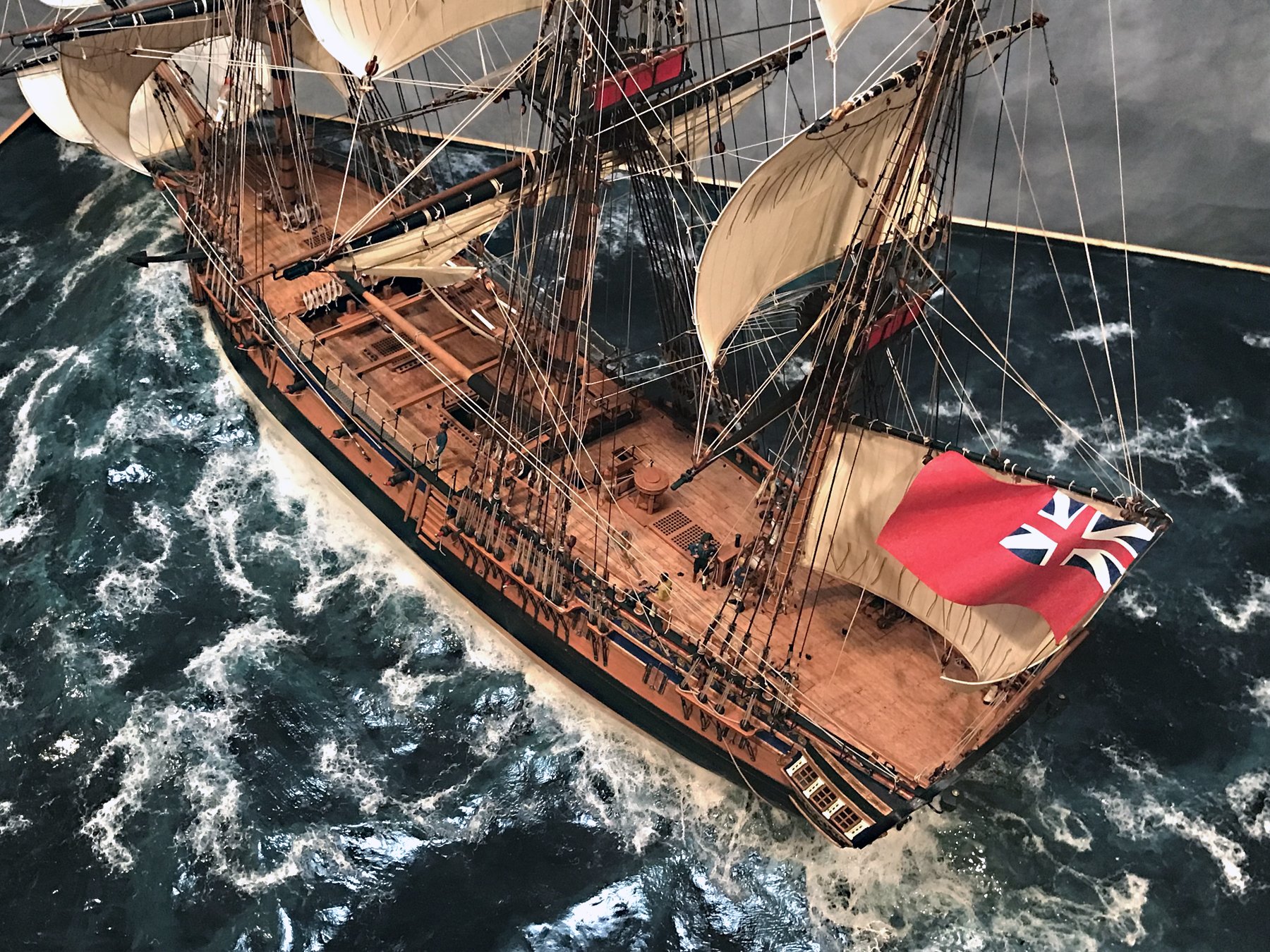
.jpg.d84ec4dad1d7791e855dca06210ab6f3.thumb.jpg.f45209242e851d4409eca1a09293165b.jpg)
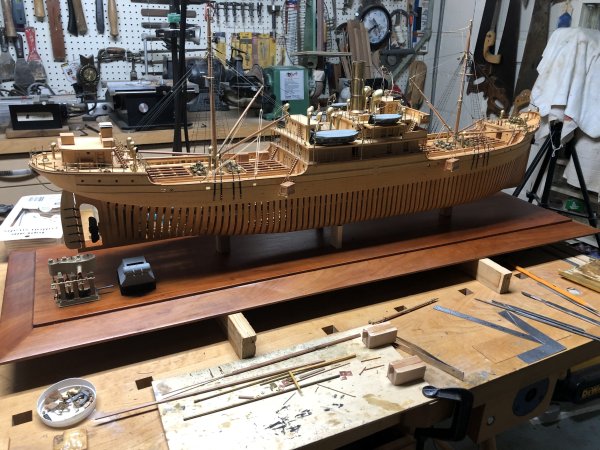
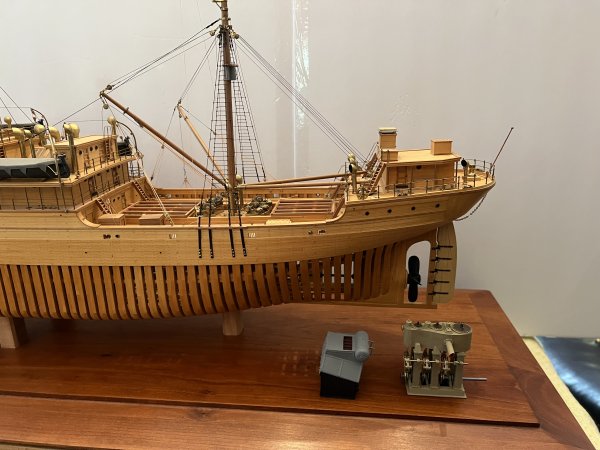
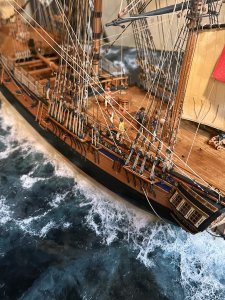
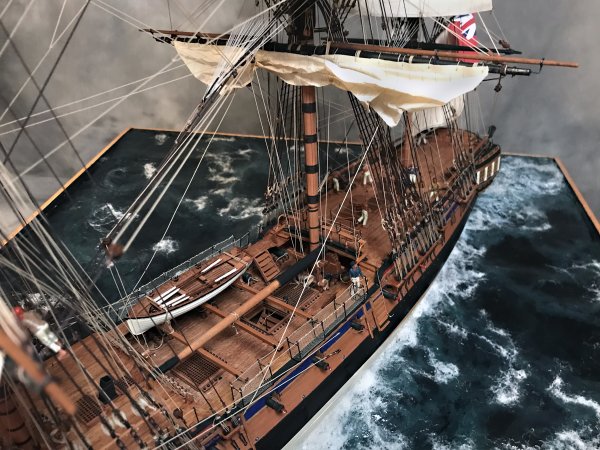
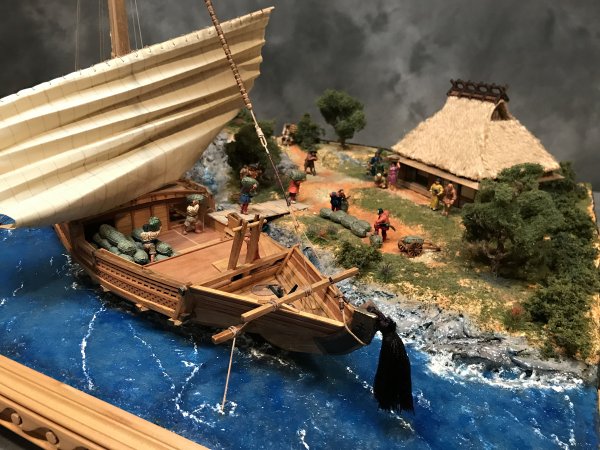
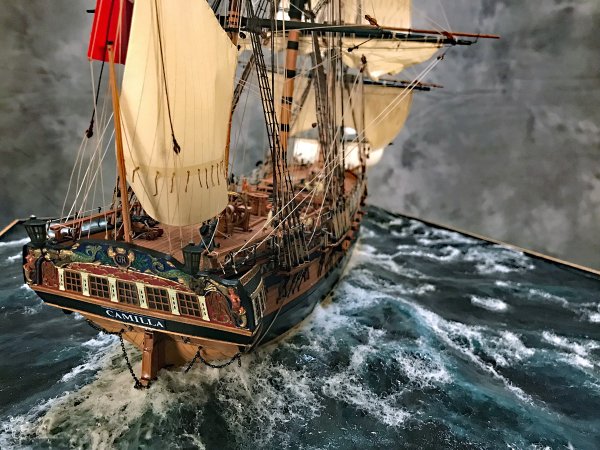
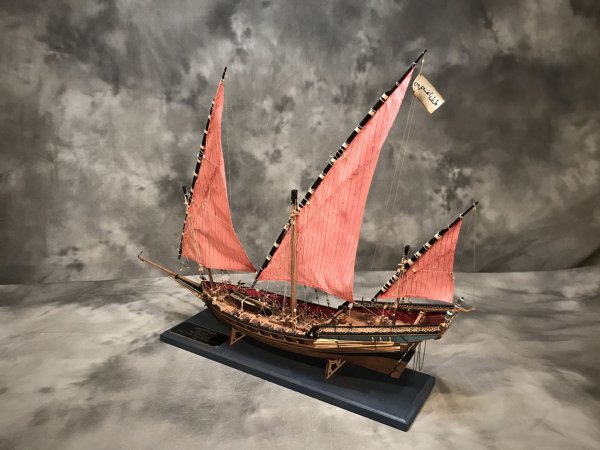
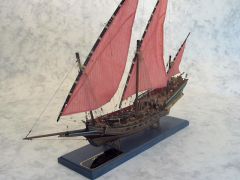

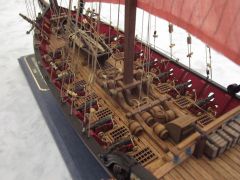
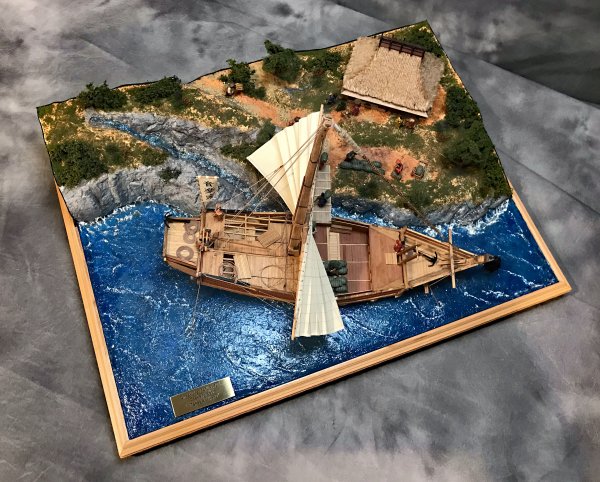
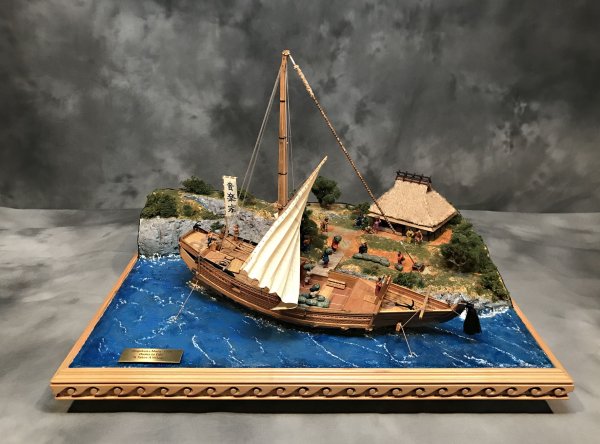
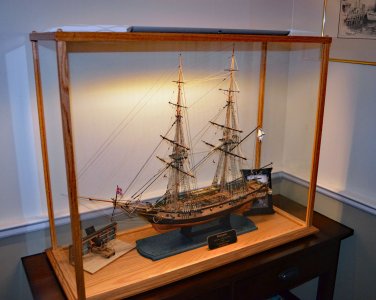
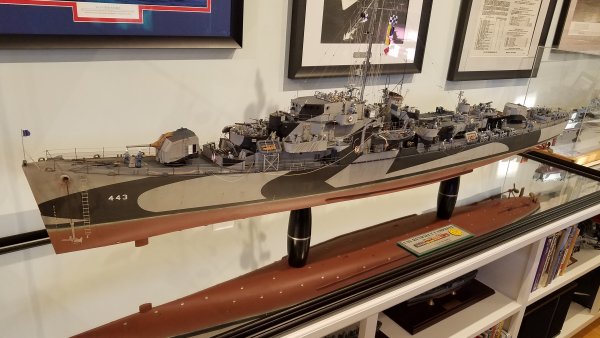
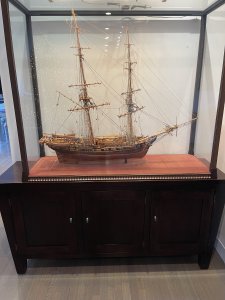
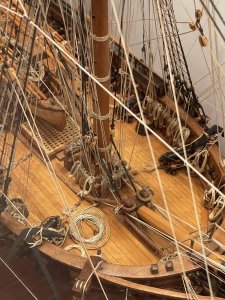
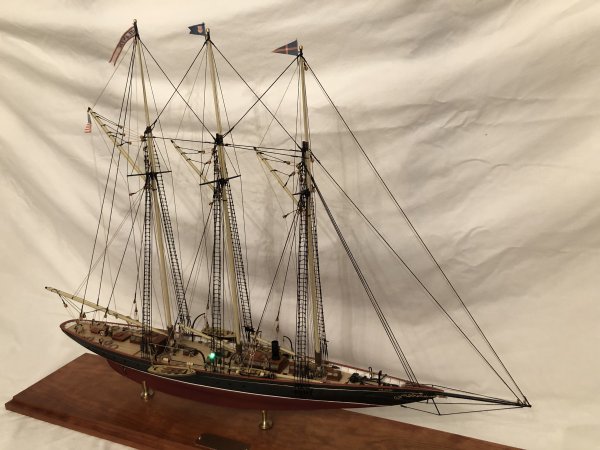
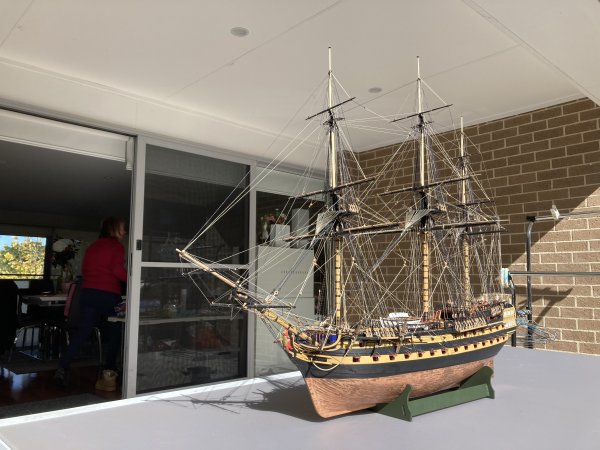
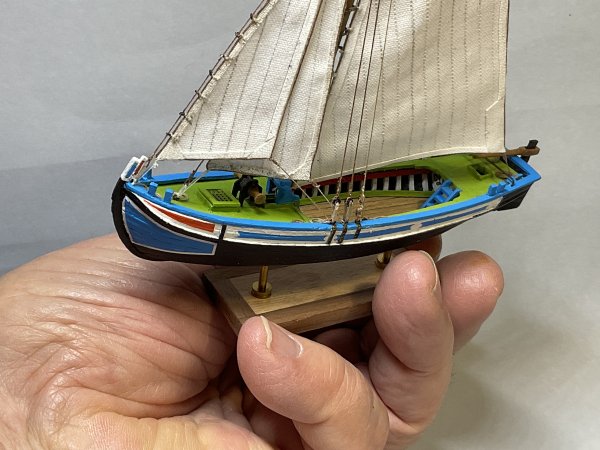
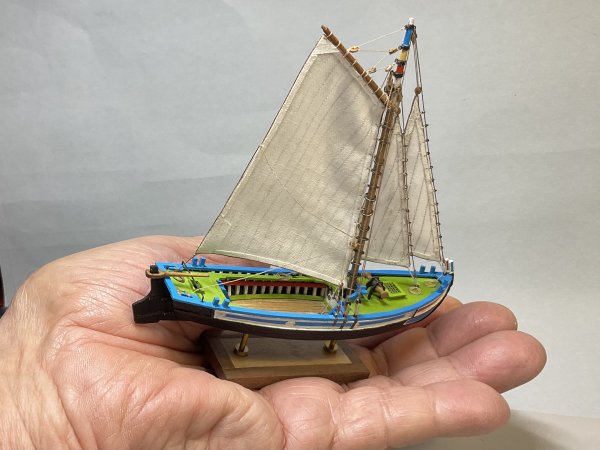
IMG_2429.jpeg
in Gallery of COMPLETED Kit-Built Ship Models
Posted
Lovely model.